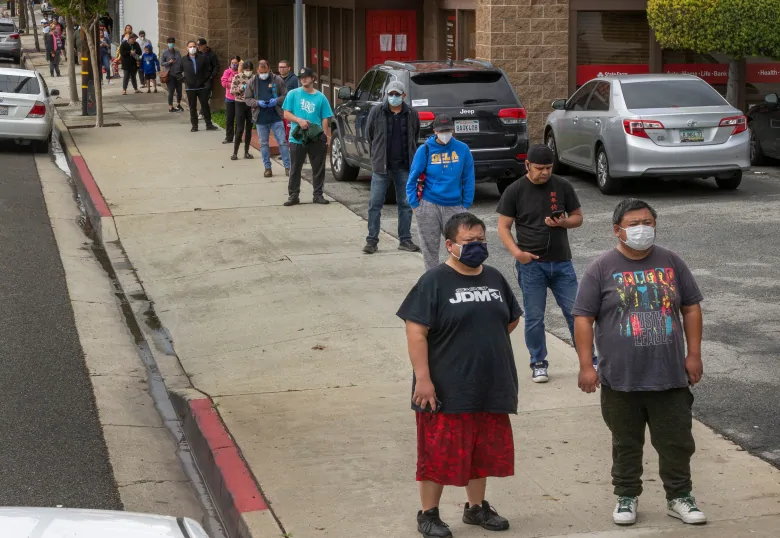U.S. health officials planning for what re-entry to 'normality' will look like

U.S. health officials are planning ways for the country to return to normal activities if distancing and other steps to mitigate COVID-19 this month prove successful in curbing the outbreak, the top U.S. infectious disease official said on Wednesday.
The Trump administration has called for 30 days of measures, including staying at least two metres away from other people, that have upended American life as most people stay isolated at home, shuttering schools and closing businesses through at least the end of April, with some states continuing certain closures through May and June.
Dr. Anthony Fauci, the head of the National Institute of Allergy and Infectious Diseases, said such steps must continue but that there are hopeful signs they are working.
“If in fact we are successful, it makes sense to at least plan what a re-entry into normality would look like. That doesn’t mean we’re going to do it right now, but it means we need to be prepared to ease into that,” Fauci, a member of the White House coronavirus task force, told Fox News in an interview.
Fauci and other public health experts have said the strict measures are needed to control the fast-spreading and potentially fatal disease that has already led to nearly 13,000 deaths in the U.S., even as the shutdowns have roiled the country. economy.
Dr. Deborah Birx, another task force member, said isolation measures must continue for now or else the country could risk a repeated spike despite the allure of warmer spring weather.
“What’s really important is that people don’t turn these early signs of hope into releasing from the 30 days to stop the spread. It’s really critical,” she told NBC’s Today. “If people start going out again and socially interacting, we could see a really acute second wave.”
Asked if 30-day distancing practices would be enough or that steps might have to continue longer, she said officials were looking at each area of the country differently as they weigh the data.
“Clearly, there are metro areas that are struggling.”
Projection revised downward
Meanwhile, a university model often cited by U.S. and state policymakers projected on Wednesday that 60,000 Americans could die, a 26 per cent reduction in its most recent forecast death toll.
The University of Washington model’s downward revision coincides with relative optimism from political leaders that caseloads may have reached a plateau in certain areas, albeit with the U.S. death toll climbing by 1,800 on Tuesday as nearly 30,000 new infections were reported.
There have been about 400,000 confirmed cases countrywide of COVID-19, the potentially lethal respiratory illness caused by the new coronavirus, and hospitals have been inundated, resulting in shortages of medical equipment and protective garments. Hospital patients have been left to suffer alone, as loved ones are barred from visiting them.
WATCH l Atypical neurological symptoms being studied:
In New York City, the outbreak’s epicentre, Mayor Bill de Blasio said mitigation efforts such as ordering all non-essential workers to remain at home “actually are starting to yield some progress,” but he warned against relaxing any restrictions too soon.
“Double down, double down, because this is finally some evidence that these strategies can work,” de Blasio told CNN. “One thing we know about it is that it’s unpredictable and it’s ferocious.”
The University of Washington’s Institute for Health Metrics and Evaluation model is one of several that the White House task force has cited.
The White House coronavirus task force has previously projected 100,000 to 240,000 Americans could die.
New York’s de Blasio cautioned that the official death toll was overlooking people who die at home without seeking care.
“Every single measure of this pandemic is an undercount. Every. Single. One,” Mark Levine, chairman of the city council’s health committee, wrote on Twitter. “Confirmed cases? Skewed by lack of testing. Hospitalizations? Skewed by huge # of sick people we are sending home because there’s no room in ERs. Deaths? Massive undercount because of dying at home.”
‘Not waiting around any longer’
While New York is scrambling to provide care, California Gov. Gavin Newsom said his state had made a breakthrough in supplies, securing a deal for 200 million medical face masks per month, mostly coveted N95 as well as surgical masks, by working through a consortia of nonprofits and a state manufacturer.
“We’ve been competing against other states, against other nations, against our own federal government for PPE…. We’re not waiting around any longer,” he told MSNBC in an interview late Tuesday night. “We decided enough’s enough. Let’s use the purchasing power of the state of California as a nation state.”
Newsom said he was confident the state would have enough personal protective equipment and could possibly export some to other states within the next few weeks.


